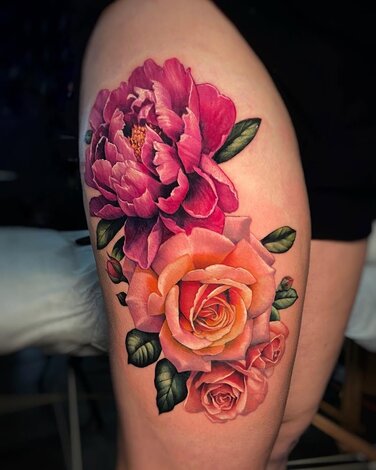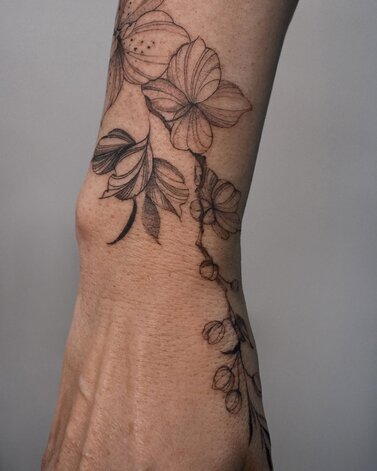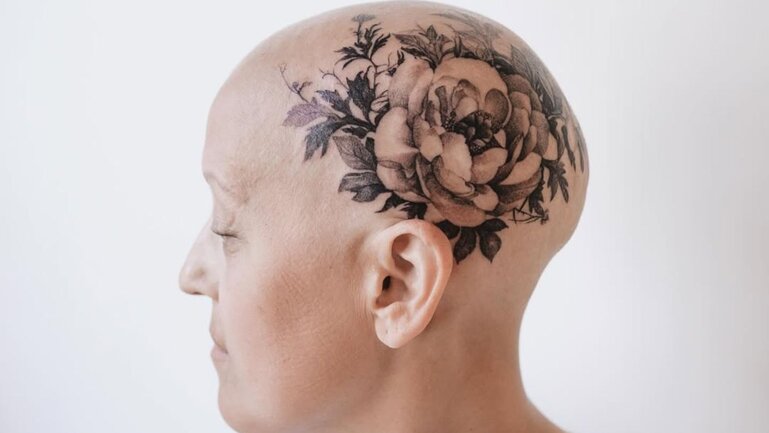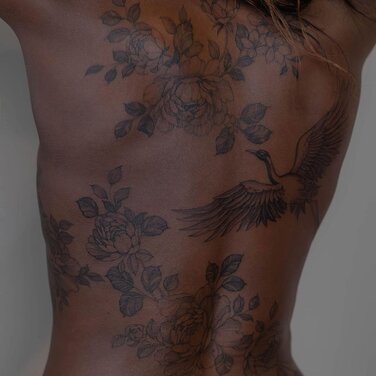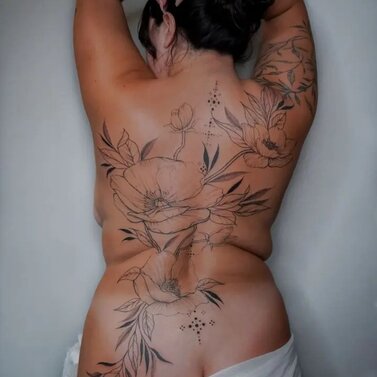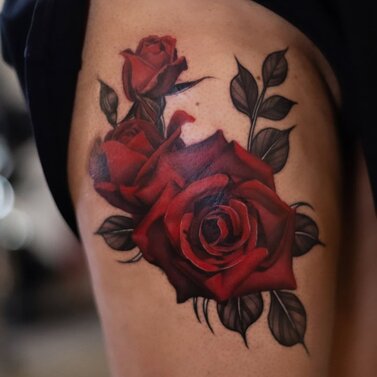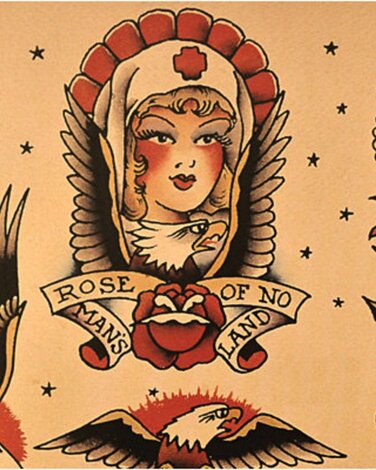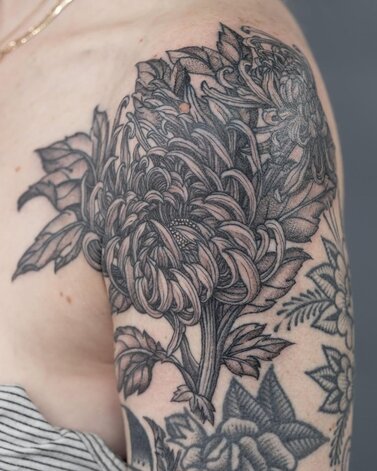Article
The Beauty of Floral and Botanical Tattoos
Discover the beauty and versatility of floral and botanical tattoos. From timeless roses to intricate Japanese designs, explore the deep meanings, diverse aesthetics, and expert techniques that bring nature-inspired tattoos to life. Learn from CO:CREATE artists like David Allen, Maxime Plescia-Buchi, and Victoria LoMonaco, showcasing the enduring legacy of botanical motifs in modern tattooing.
January 27, 2025
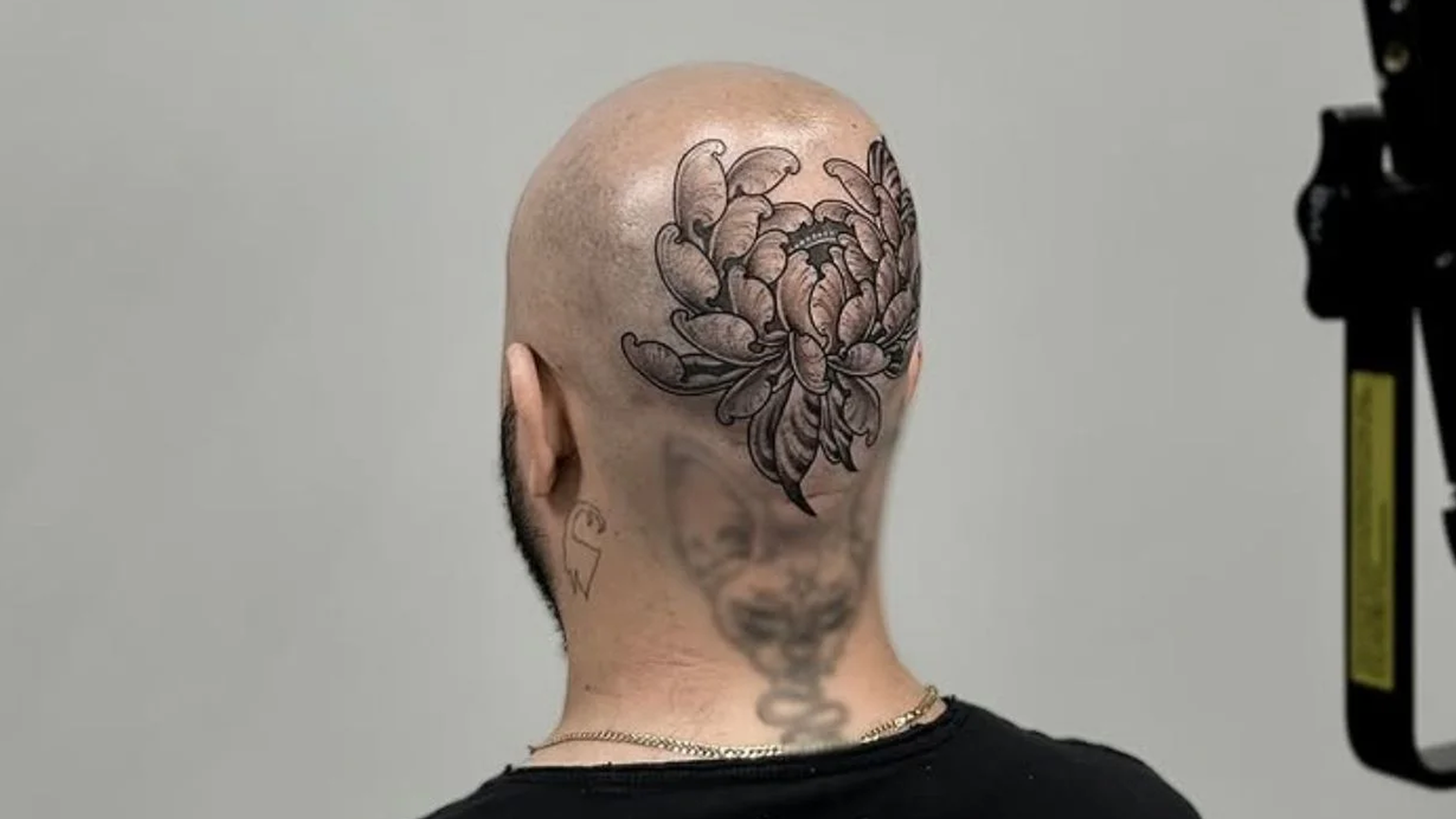
Floral and botanical motifs thrive in almost every genre of tattooing. All varieties of flowers blossom in color, hyper realistic, black and grey, Japanese, micro realistic, hand poke tattoos, and so much more. Snaking ivy, soaring conifers, magnificent maple leaves; these all find form too. Floral and botanical tattoos can communicate deep meaning (connected to religion, cultural readings, mythology, etc.), but also serve as decorative elements chosen from personal desire. Due to the vastness of the subject matter (nature, what a marvel!) floral and botanical designs can fit every taste. CO:CREATE artists David Allen, Maxime Plescia-Buchi, Adriana Hallow, Anastasia Skvortsova, Victoria LoMonaco, Kevin Laroy, Julia Tahinos, Mari, CJ and Carlotta Ink, illustrate the aesthetic breadth and potential of floral and botanical tattoos.
The CO:CREATE Method
Every tattoo style has a range of expressions. At CO:CREATE, we acknowledged that range, and are focused on three core considerations for describing the tattoo you want: aesthetic, iconography, and technique.
Aesthetic refers to how the tattoo looks. Line weight, color, saturation, movement with the body all contribute to look.
Iconography examines the meaning attached to the tattoo. We describe the cultural, historical, and spiritual connections chosen imagery carries and communicates.
Technique specifies the methods used to. For example, different techniques of shading (whip, dot, drag, etc.) create different levels of depth and dimension. Color layering, color packing, or distinct forms of linework, all contribute to refining the final form of your tattoo.
Discussing these three elements with your artist helps assure you get your dream tattoo.
Iconographic Sources
There is no shortage of sources for floral and botanical inspiration. For one, quality phone pictures of anything that strikes the eye on a walk can become the basis for a design. Ancient Greek laurels, Ancient Egyptian lotuses, Renaissance still life, Victorian print culture, historic insignias, Japanese woodblocks—the list goes on. Specific flowers, given their meanings, offer narrative potential in tattoos. The lotus, for example, conveys enlightenment; cherry blossoms relay transient beauty; and peonies symbolize good fortune. Folklore and mythology from all cultures ascribe meaning to floral and botanical symbols, and there are abundant resources (books, podcasts, etc.) to explore the depth of language that stems from each.
Floral Botanical Aesthetics
Given that floral and botanical motifs stretch across most subgenres of tattooing, the aesthetic variations are vast. For example, an artist like Sophie Brown specializes in high contrast black work, while in the work of Adrianna Hallow vibrant colors reflect in a realistic style. Abstractions of floral and botanical symbols are evident in hand poked tattoos. Direct reproductions are not only in the realm of realistic color or black and grey, but also in the delicate rendering of fine line tattoos. Flowers are important within the language of Japanese tattoo and traditional tattooing as well. Los Angeles-based Anastasia Skvortsova creates floral and botanical assemblages in elegant fine lines and describes them as cosmic, dreamy, ethereal. Those terms are an aesthetic all their own.
Floral Botanical Techniques
Techniques for floral and botanical tattoos run the gamut of tattooing. Los Angeles-based Karol Dias employs fine lines and dotwork. Toronto-based CJ and Boston’s Julia Tahinos delicate black and grey relies on fine lines. In Houston, hand-poke artist Victoria LoMonaco uses only black ink to deliver floral and botanical ornamental tattoos, often in large scale, built with dots and lines. Etching techniques, such as stippling, create dimension and contrast in black and grey and black work floral and botanical tattoos. Color blending adds naturalistic volume and realistic movement to the tattoo.
Floral Botanical History
Whether as core subject or decorative addition, floral and botanical motifs have been core to modern tattooing. In traditional tattooing, the rose is ubiquitous. World War I birthed the now iconic Rose of No Man’s Land design, an ode to the red cross nurse, and a clear example of how traditional tattooing adds to its iconography over time. The intermingling of Japanese symbols and aesthetics in American tattooing from the late 19th century made cherry blossoms and chrysanthemums both common and popular in tattooing. Each successive generation and innovation within tattooing has embraced floral and botanical motifs and as a result created an enduring lineage and legacy speaking to past, present and future.
Floral and botanical tattoos come to life in the work of CO:CREATE artists like David Allen, Maxime Plescia-Buchi, Adriana Hallow, Anastasia Skvortsova, Victoria LoMonaco, Kevin Laroy, Julia Tahinos, Mari, CJ and Carlotta Ink. From bold, colorful blooms to delicate black-and-grey details, their styles show just how versatile floral designs can be. Whether inspired by cultural stories, personal meaning, or just a love of nature, these artists use techniques like fine lines, shading, and dotwork to create stunning tattoos that feel as alive as the plants they’re based on.
Explore more Floral Botanical tattoo artists on CO:CREATE.
A trusted, Artist-led network of top tattoo Artists — a place where clients can search, discover, and book with the best.
Discover
Artists
Connect
© 2025 Gesso Labs, Inc.
Privacy PolicyTerms of ServiceReferral TermsGiveaway RulesArtist AddendumAI & LLM
